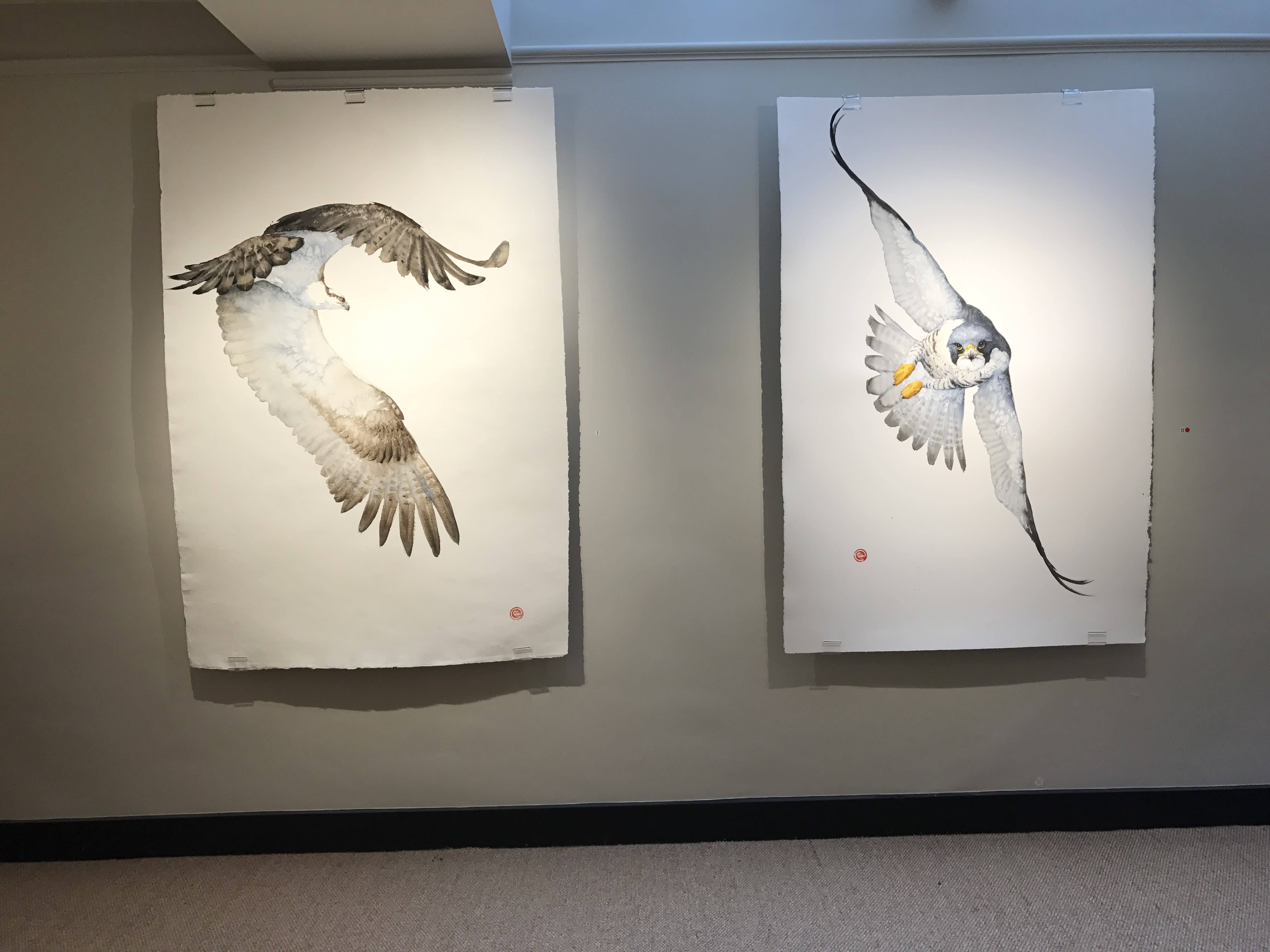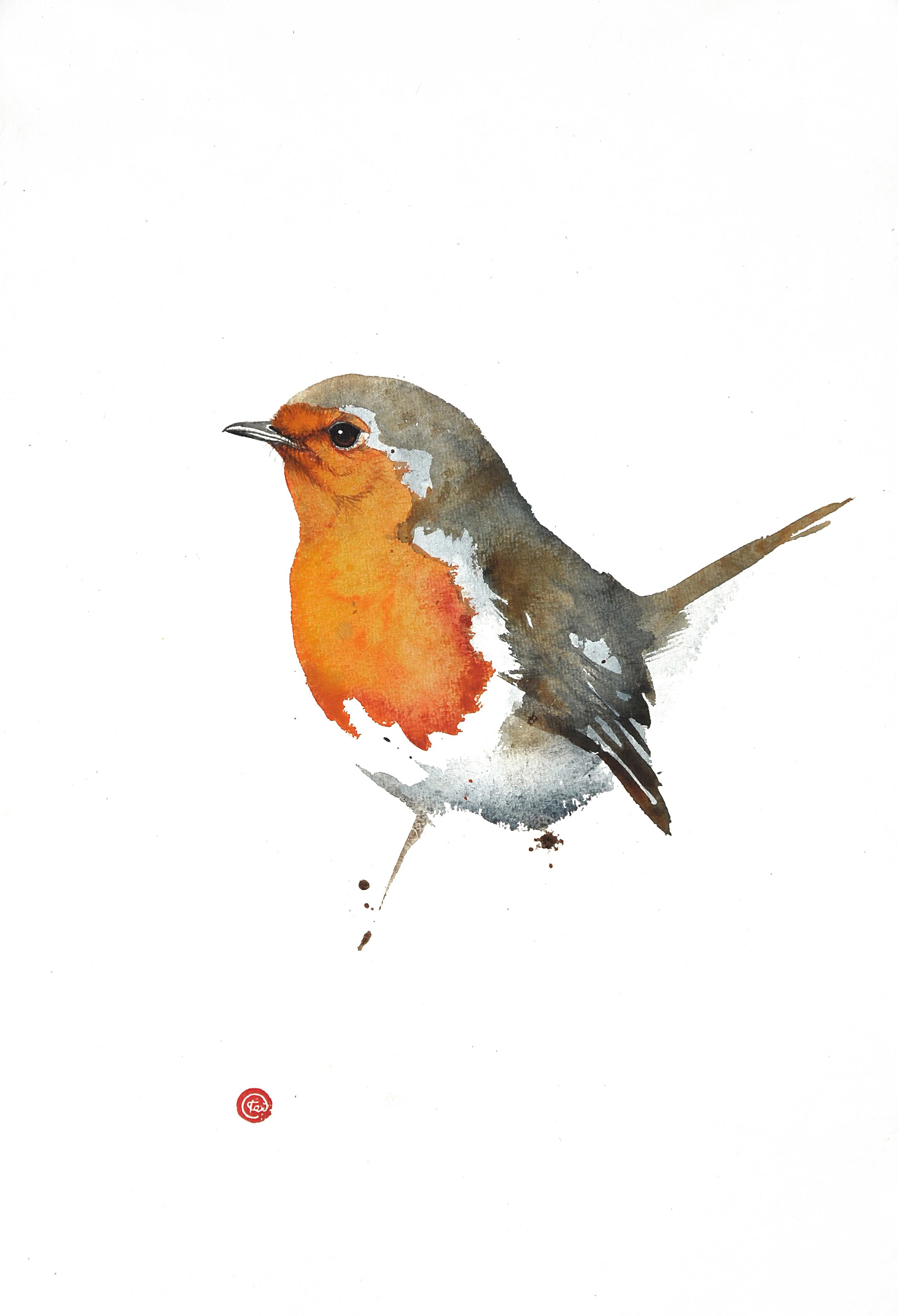
1. What is it about birds that fascinates you so much?
It’s hard to answer as I have been painting birds all my life, so I really don’t know. But I suppose it’s their multitude of colour, shapes and personalities.
2. Many of your paintings capture birds in flight. How do you capture their energy on paper?
Various “flight angels” have different energy. So I try to find more than just a soaring flight. I look for dynamic shapes created by the placements of the wings, preferably having a nice contrast between thick and thin forms. Then they have to be painted quickly to retain the energy in the actual paint strokes.
3. One of the most remarkable aspects of your work is that you paint from memory – do you ever use photographs for the detail?
Now and then I need to reconfirm some details – generally when it comes to the face of the bird.
4. One interesting feature of your birds is that your use of colour is almost suggestive as if seeing the bird from a distance. Can you explain your approach.
I’m trying to capture the general shape of the bird, not the details – however tempting they may be. This is probably the reason for the feeling of a silhouette more than the total bird. Also, when the eye concentrates on the details of the face, the viewer will finish the details themselves.
5. Why is your chosen medium watercolour?
I am a bit lazy. I don’t like having to clean up after a day’s work. And I can use water to clean off the floor, as I splash quite a bit. Also, it does not destroy my Asian brushes that are made for water-based media.
6. This exhibition has a wonderful range of birds from the Arctic Tern to the Robin. What is your favourite bird to paint?
That is impossible for me to answer. I find new favourites all the time. The more I study a bird, the more fascinating it becomes.
7. How much time did you spend studying Curlews in Flight for your remarkable painting of Curlews in this exhibition?
Quite a bit of time. First for each individual bird, then working out how they would all work together in a composition.
8. Is the most important thing for you to try and capture the character of the birds that you paint?
Yes, I want to find an individual. Sort of like a portrait. If you look closely you’ll see that each individual bird has its own personality.
9. Are there any other bird artists that you admire.
Yes, many. Among them Dr. Chao Shao an from Hong Kong, J. F. Landsdowne from Canada and many more whose names I can’t think of just now.
10. Do you think you will ever tire of painting birds or is it something that will engage you for years to come?
I suspect I’m hooked on birds. I do paint other animals from time to time, but I don’t think I will ever give up birds.
11. Many people are city dwellers and do not have the chance to see many of these wonderful birds. Do you see your paintings as almost being a record of many of these species which are struggling to survive?
I don’t think any of the birds I have painted for this show are particularly rare. I have to admit I don’t make a point of that. And it is important to know that even in the most populated cities, there are always tons of birds. You just have to learn how to find them.
12. And finally, what do you like about Cricket Fine Art?
The enthusiasm for their artists. The cooperation between us is inspiring for me. Working together should be fun and productive for both. And it really is.


